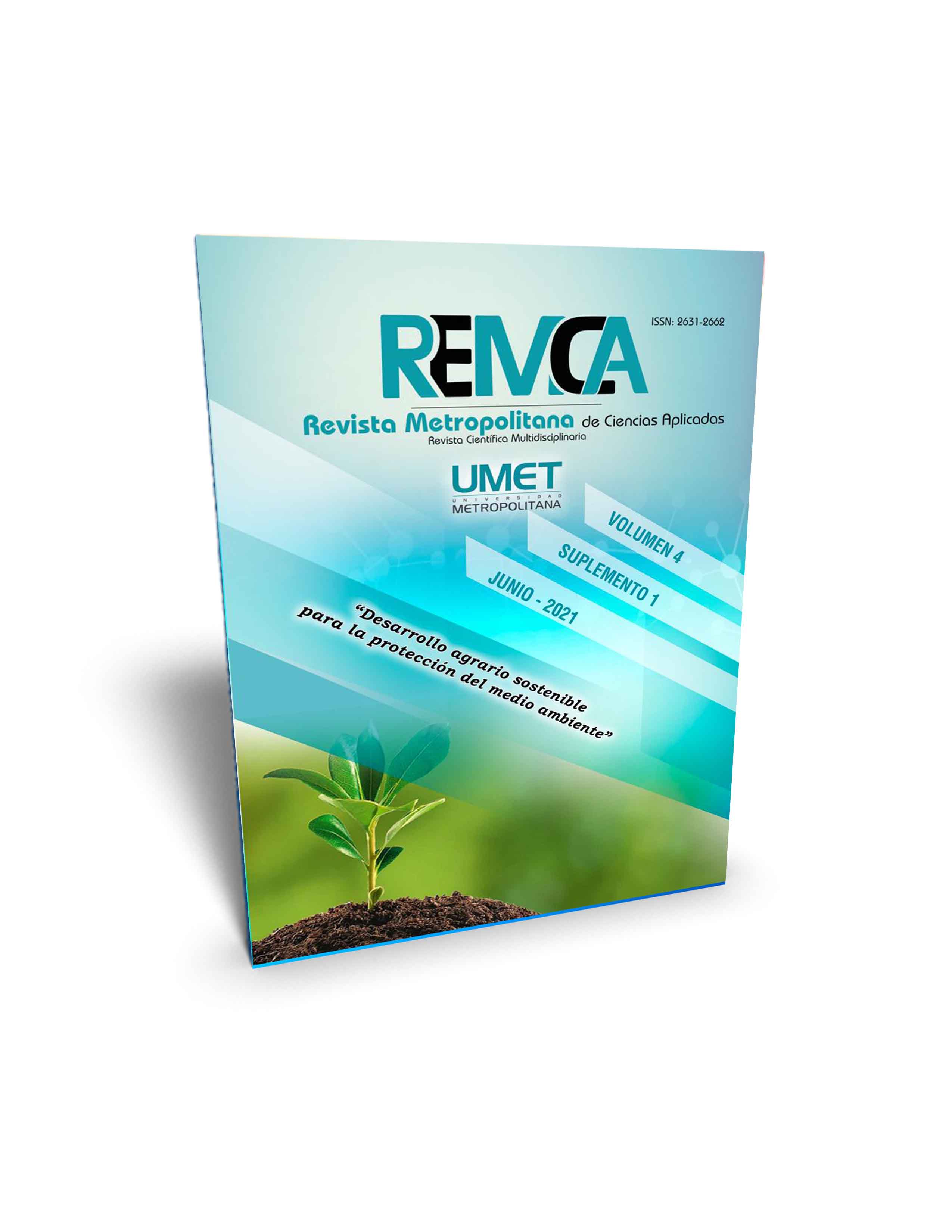Impact of Aloe vera Mill gel as a substrate for the invitro cultivation of Coffea canephora (robusta)
DOI:
https://doi.org/10.62452/j9pb0k72Keywords:
Concentration, invitro, Aloe vera Mill, rootingAbstract
The study was carried out in the Physiology laboratory of the Faculty of Chemical Engineering and Agronomy, in order to determine the most effective application concentration of the A. vera Mill gel to achieve an in vitro substrate, 1500 ml of the mesophyll of the plant and from this the other concentrations were made: T-1 concentration of 0.25 ml. L¯¹ of A. vera Gel, T-2 of 0.50 ml. L¯¹, T-3 0, 75 ml.L ¯¹ and T-4 as Control. An Artificial Climate Chamber was used to imitate a natural environment: lighting, temperature, ambient humidity. The variables evaluated were: number and length of the root, height of the plants (cm), and number of leaves. The best results were obtained using the concentration of 0.50 ml.L-¹, with a greater number of roots per bud, greater total length of the same, as well as the number of leaves, being shown that this species can effectively be used as substrate and obtain vitroplants of coffee var. Robust of optimum quality.
Downloads
References
Castillo, A. (2004). Propagación de plantas por cultivo in vitro: una biotecnología que nos acompaña hace mucho tiempo. http://www.inia.uy/Publicaciones/Documentos%20compartidos/111219220807102417.pdf
Domínguez, R. N., Arzate, I., Chanona, J. J., Wlti, J. S., Alvarado, J. S., Calderón, G., Garibay, V., & Gutiérrez, G. F. (2012). El gel de Aloe vera: estructura, composición química, procesamiento, actividad biológica e importancia en la industria farmacéutica y alimentaria. Revista Mexicana de Ingeniería Química, 11(1), 23-43.
Fasolo, F. M., & Predieri, S. (1988). In vivo rooting of gf 655-2 peach rootstock and kiwi cv. ‘‘Hayward’’ Microcuttings. Acta Horticula, 227, 500-503.
Figueroa, E., Pérez, F., & Godínez, L. (2015). La producción y el consumo del café. ECORFAN- Spain.
Martin, D. A., Cárdenas, O., & Constantino, J. (2012). Sustancias utilizadas como agente gelificante alternativas al agar en medios de cultivo para propagación in vitro. Revista de Investigación Agraria y Ambiental, 3(2), 49-62.
Martin, D., Cárdenas, O., & Cárdenas, A. (2013). Almidón de papa, agente gelificante alternativo en medios de cultivo para propagación in vitro de lulo (Solanum quitoense Lam.). Revista de Ciencias Agrícolas, 30(1), 3-11.
Pérez, V. J., Mijares, J. F., Martínez, J. J., Baez, J. G., & Candelas, M. G. (2019). Composición Química, Propiedades Físicas y Reológicas del mucílago de Aloe barbadensis Miller. Investigación y Desarrollo en Ciencia y Tecnología de Alimentos, 4, 902-906.
Reynolds, T. (2004). Aloes: The Genus Aloe. Medicinal and aromatic plants-industrial profiles. Editorial CPR Press LLC.
Ribón, A. Y., & Bernal, I. J. (2020). Protocolo de establecimiento in vitro de segmentos nodales de arándano azul (Vaccinium corymbosum L.) cv Biloxi. (Trabajo de grado para optar por el título de Licenciadas en Biología). Universidad Distrital Francisco José de Caldas.
Rodríguez, F. V. (2018). Producción de minitubérculos de papa (Solanum tuberosum L.) de los cultivares Karú y Pampeana producidos en biorreactores económicos de inmersión temporal (BEIT) y su multiplicación por esquejes extraídos de yemas apicales y axilares. (Tesis de Maestría). Universidad Nacional Agraria.
Downloads
Published
Issue
Section
License
Copyright (c) 2021 Argelio Despaigne Deroncelé (Autor/a)

This work is licensed under a Creative Commons Attribution-NonCommercial-ShareAlike 4.0 International License.
Authors who publish in Revista Metropolitana de Ciencias Aplicadas (REMCA), agree to the following terms:
1. Copyright
Authors retain unrestricted copyright to their work. Authors grant the journal the right of first publication. To this end, they assign the journal non-exclusive exploitation rights (reproduction, distribution, public communication, and transformation). Authors may enter into additional agreements for the non-exclusive distribution of the version of the work published in the journal, provided that acknowledgment of its initial publication in this journal is given.
© The authors.
2. License
The articles are published in the journal under the Creative Commons Attribution-NonCommercial-ShareAlike 4.0 International License (CC BY-NC-SA 4.0). The terms can be found at: https://creativecommons.org/licenses/by-nc-sa/4.0/deed.en
This license allows:
- Sharing: Copying and redistributing the material in any medium or format.
- Adapting: Remixing, transforming, and building upon the material.
Under the following terms:
- Attribution: You must give appropriate credit, provide a link to the license, and indicate if any changes were made. You may do this in any reasonable manner, but not in any way that suggests the licensor endorses or sponsors your use.
- NonCommercial: You may not use the material for commercial purposes.
- ShareAlike: If you remix, transform, or build upon the material, you must distribute your creation under the same license as the original work.
There are no additional restrictions. You may not apply legal terms or technological measures that legally restrict others from doing anything the license permits.




